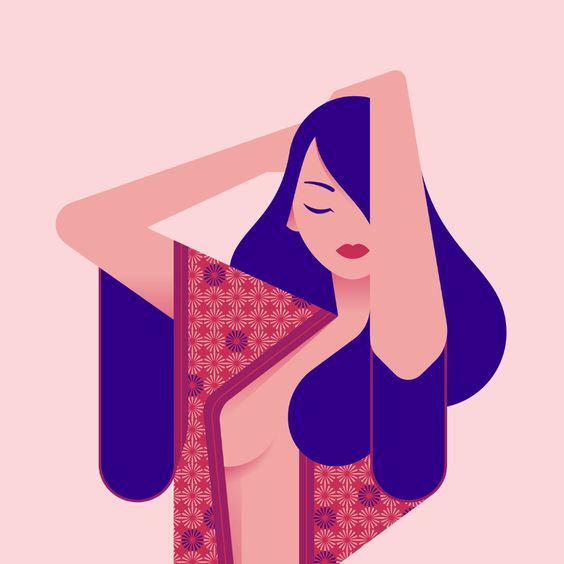
Most of the women will say that menstruation is the way our body prepares for a possible pregnancy. Right, every cycle it releases a newly matured egg from the ovaries and waits for it to be fertilized. If fertilization doesn’t happen, you menstruate.Let’s understanding more about your cycle can help improve your mental, physical, and sexual health.
Most girls’ first menstruation will occur during puberty, which is around 12-14 years old, and some will be earlier or later.

What is normal menstruation?
It usually lasts somewhere between 3-7 days, with a blood loss of around 30-80ML. But nothing is set in stone, different body shapes, ages, and routines will affect the menstrual cycle and state.
The menstrual cycle is an increase and decrease of a series of hormones along with a 28-30 (average) day cycle that allows the body to prepare for pregnancy each month.
Once a month, your body releases a newly matured egg from the ovaries, and waits for it to be fertilized. If fertilization doesn’t happen, you menstruate producing menstruation discharge. It is a mixture of blood and uterine lining, which is shed by the uterus. If the egg is fertilized, then you have no menstruation, meaning you’re pregnant.

Common menstruation problems:
1. PMS: also known as premenstrual syndrome, it can give you headaches, mood swings, cramps, acne or general discomfort.
2. Cramps: menstrual cramps are usually a throbbing pain in your lower abdomen and/or lower back and can range from mild to debilitating. These cramps are caused by the contractions of your uterus, a muscle, against the blood vessels around it. They can get better with age and after giving birth.
3. Bloating: the hormonal imbalance that happens around your period can cause you to bloat but will subside once your period is over.
4. Acne: it is a normal part of adolescence and happens to both men and women. While hormonal acne during puberty occurs on the T-zone (forehead, chin and nose), adults find hormonal acne on the lower part of their face. This condition is not severe and usually subsides once your period is over.
5. Delayed menstruation: this is very common, especially for adolescent girls and women entering menopause. Hormones are not acting quite normal in both these situations, in one, they are just starting to be produced and have to stabilize. For women entering menopause, the hormones aren’t working like they used to and are being produced in less quantity.
What helps relieve menstruation problems?
Regular short-term aerobic exercise such as 30 minutes of fast walking, running, or riding a bicycle can alleviate unpleasant symptoms. And it is also recommended to get enough sleep, avoid caffeine and fatty foods, and cut down on salt and sugar.

The color of menstrual blood can range from pink to bright red or dark brown throughout the period. Most women may also have small blood clots, especially on the days of the most profuse bleeding. This is absolutely normal.
Amenorrhea is the lack of menstruation for three cycles or more, or when a young woman doesn’t get her first period before turning 12-14 years old. Amenorrhea can be caused by natural moments in a woman’s life, like pregnancy, breastfeeding or menopause. A lack of menstruation can suggest a hormonal imbalance of some sort that is preventing the cycle to occur in its normal rhythm.

Regarding the use of sanitary napkins, we recommend that you use sanitary napkins that are chlorine-free and chemical-free to ensure adequate absorption and lock water while maintaining breathability and comfort to prevent bacterial growth. Even if your menstrual flow is very light, you should change hygiene products every 4–8 hour.



